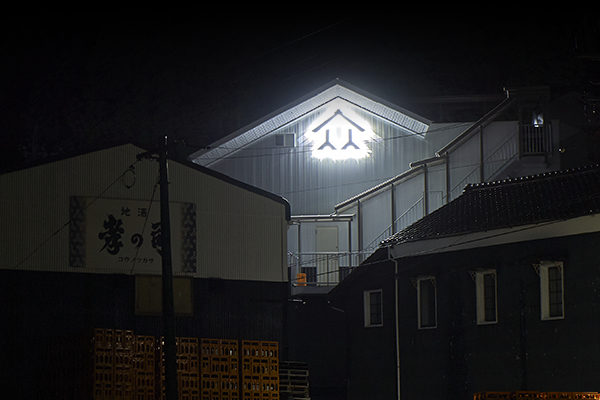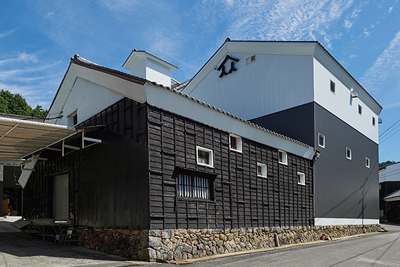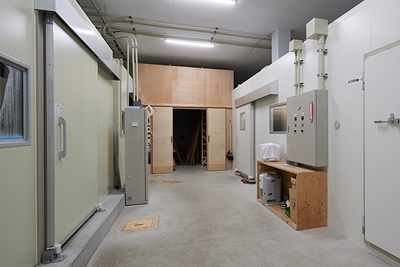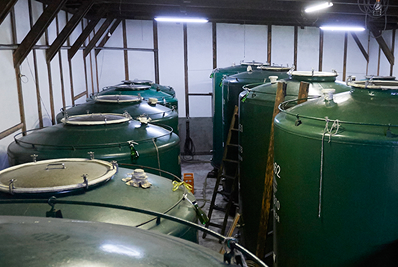- HOME >
- Creation of 众 -gin-
Creation of 众 -Gin-
We began the challenge of creating a new sake with a profound love and fascination for its long traditions, stretching all the way back to ancient Japan.
The Birth of Gin
As a drink for enjoying with meals, I had always felt that sake was light, or slightly lacked a sense of presence compared to wine. At the same time, I believed that traditional Japanese sakes were Junmai-shu with a solid, rich flavor, rather than the more light Ginjo flavor. My personal preference was to rely on the Kimoto/ Yamahai brewing methods, which can develop more natural and wild flavors. However, it was difficult to completely shift from producing regular sakes, as the demand for Omiki, or sake offered to the shrines, remained high. Then one day when I was traveling, I came across a bright, yellow Yamahai Junmai-shu at a meal. “This is what I had been searching for!” I thought to myself. There was no dull sweetness, and the aftertaste was absolutely clear. A rich and profound flavor, with an ever-present acidity and flavor of umami, and a strong, refreshing aftertaste. That was the sake I wanted to make. A sake that can match any meat dish and meet any flavor. I wanted to make a sake with a taste that would be amplified when heated, and clear the palate when enjoyed during a meal. This was the moment I found the answer to what I had been searching for so long.

和
Communication
Since the old days it has been said, “Communication is what brews good sake”. No matter how rich the surrounding environment is, good sake cannot be made if there is no communication among everyone involve. At our brewery, we work to bring together the minds of our brewers. The character used for Gin means people—the people that stand behind the long history of sake we build on, the people that work together to produce our world-class sake, and the people that enjoy it together all over the world today.

一
Origin
We began the process of developing a new sake by rethinking the way we go about making any of our sakes. We cleaned our cellars from top to bottom, and set out to create a new, world-class Kimoto brewed sake with a bold flavor and a pure, clear taste. With all this in mind, we named our new cellar the “Ginjo-gura”.
Access
By car
- Approx. 30 min. from Okazaki I.C. on the Tomei Expressway
- Approx. 30 min. from Toyota-Matsudaira I.C. on the Tokai-Kanjo Expressway
By public transportation
- By Sasayuri Bus/ approx. 40 min. on the “Shimoyama district line” from Okazaki Genkikan-mae. Please tell the bus driver you will be getting off at “Shibata Brewery” when boarding the bus. The bus will stop near the brewery.
※The Sasayuri Bus operates only on weekdays. Please confirm the Okazaki City website for details regarding other community buses in the Nukata district.
Kanzui, Aza, Hokkyucho, Okazaki-shi, Aichi 444-3442 TEL: 0564-84-2007 FAX: 0564-84-2785
Open hours/ Weekdays 8:00 a.m. - 5:00 p.m. Weekends & holidays 10:00 a.m. - 4:00 p.m.
The brewery may be closed on weekends or holidays. Please confirm with the calendar below.
営業日カレンダー
| 月 | 火 | 水 | 木 | 金 | 土 | 日 | ||||||||||||||
|---|---|---|---|---|---|---|---|---|---|---|---|---|---|---|---|---|---|---|---|---|
| ||||||||||||||||||||
| ||||||||||||||||||||
| ||||||||||||||||||||
| ||||||||||||||||||||
| ||||||||||||||||||||
| 月 | 火 | 水 | 木 | 金 | 土 | 日 | ||||||||||||||
|---|---|---|---|---|---|---|---|---|---|---|---|---|---|---|---|---|---|---|---|---|
| ||||||||||||||||||||
| ||||||||||||||||||||
| ||||||||||||||||||||
| ||||||||||||||||||||
| ||||||||||||||||||||
定休日



